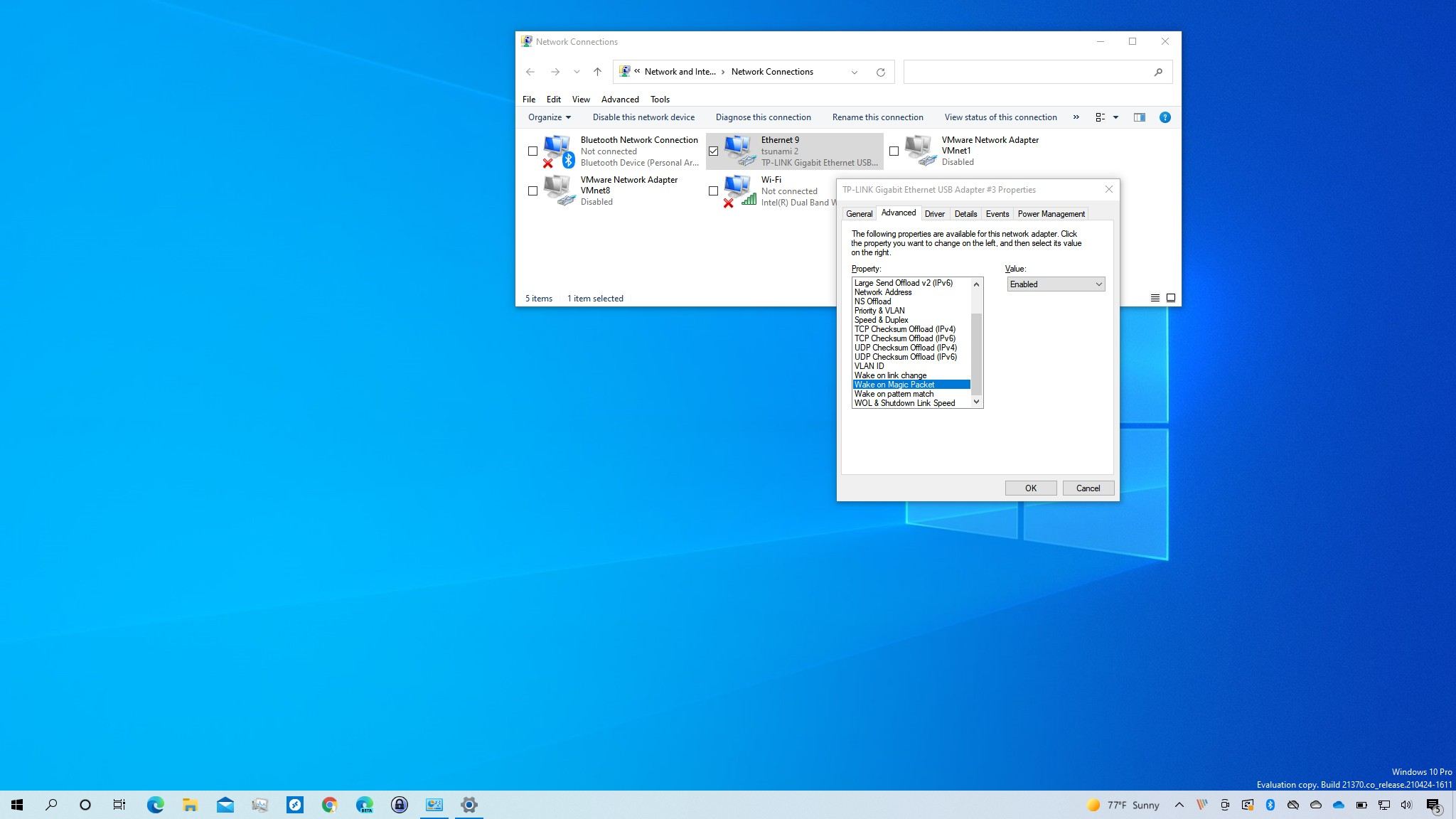

In addition, the app has a content rating of Everyone, from which you can decide if it is suitable to install for family, kids, or adult users.
Mac wake on lan app android#
Wake on Lan/Wan with Widget requires Android with an OS version of 4.1 and up. It has gained around 5000 installs so far, with an average rating of 4.0 out of 5 in the play store. In my case, I use a cheap Raspberry Pi 3 (which I already use for controlling other things).Wake on Lan/Wan with Widget is an Android Tools app developed by Gianluigi Bresaola and published on the Google play store. Then you can SSH to your insider over the internet and let it send the magic package for you. It’s a device that is always on and connects to your local network. Third solution: If your router is not that good, you will need an insider. Check if your router is supported by OpenWrt here. You can install a third-party firmware to unlock all of these. For marketing purpose, many router producers hide functionalities on their products. Second solution: You can check if you can install a better firmware for your router. Remember to make a DHCP reservation for your server, so that its IP will not change after reconnecting.

However, as far as I know, most of the popular commercial routers do not support this (my case). You can use this website to wake up your server. Some routers even allow forwarding broadcast packet. You can just forward any packet from port 7 or 9 UDP to your target device.

I’ve listed them below from the easiest to the hardest (sometimes the only) solution:įirst solution: If your router supports forwarding the magic packet (Port 7 or 9 UDP), you are lucky. There are many solutions to send the magic packet through the internet. Note that your router must have a static IP (i.e., 82.164.3.27) to complete this step. Step 3: Make Wake-On-Lan work through the internet.
Mac wake on lan app mac#
Note that you will need your mac address to wake up your machine through the internet. You can use the ifconfig command to find out that information. You can add the device manually if you know its mac address and broadcast address. Try to turn off your target machine and wake it up by your phone. You just search for your machine, add it, and then you can send the magic packet to it whenever you want. It can automatically scan your local network and list all of the connected devices. You can use a mobile app called “Wake-on-Lan” in Android (there are similar apps for iOS, but I haven’t tested it). To make the setting sustains after rebooting, you need to add the last command above to the interface’s configuration in etc/network/interfaces. $ route #Get name of the default interface, for example: eth0 $ sudo ethtool eth0 #Look for "Supports Wake-on: g" line, which means WOL supported $ sudo ethtool -s eth0 wol g #Enable WOL The whole process can be done as following: Second, on Ubuntu, you have to know your default interface, check if it supports WOL, and turn on the feature. Enter the BIOS setup and look for “ Wake up on PCI event” or “ Wake up on LAN” and enable it. First, you have to turn on the WOL feature on your motherboard. In this step, we will try to do just that. So you have to be in the same network with your target device to make it work. You can skip this step if your machine is using a wired connection.Īs the name suggested, WOL is designed to wake-up a machine through a local network. I fixed the situation by using a Wifi Repeater, and connect it to the server through an Ethernet cable. It turned out that the Magic Packet must be sent to the motherboard’s built-in Ethernet port since it’s the only thing awake when the whole machine off. However, I recognized that I cannot wake-up my server through its wireless interface (I’m using a USB wireless adapter). When the packet is received, the target machine’s network interface wakes-up the rest of the computer. WoL works by sending a packet of data called a Magic Packet™ to a target machine. In most motherboards, there is a function called “Wake-on-Lan” (WOL). You can have a look at my final network setup first. It would be so cool, especially when I’m away for an extended period and don’t want to waste money on the energy bills. That is like having the server’s power switch with me all the time. Of course, a simple solution is getting a UPS (Uninterruptible Power Supply), but I was fascinated by the idea that maybe I can turn on my server over the internet. When I went home, I figured out that the electricity in my apartment was very unstable due to a small construction upstairs. Suddenly anything stops working, and I wasted several hours hopelessly trying to fix it. It was always convenient like that until I got sudden disconnection last month. My daily work usually starts by opening an SSH connection to a server, running a docker image (with RStudio Server or Jupyter on it), and analyzing data or programming directly on the browser.


 0 kommentar(er)
0 kommentar(er)
